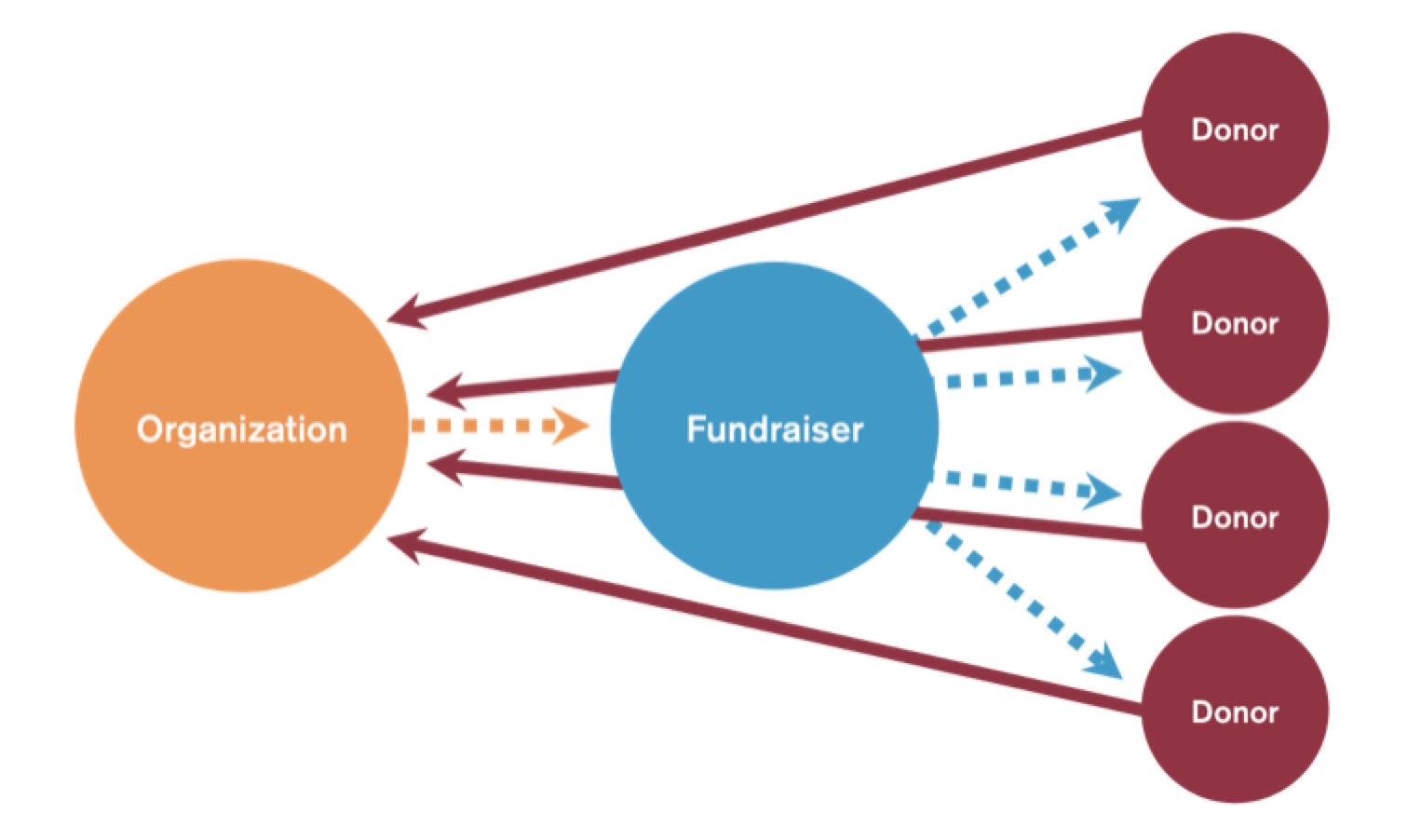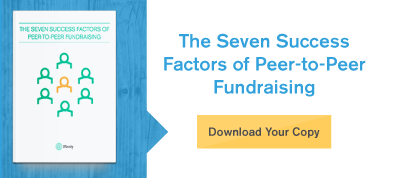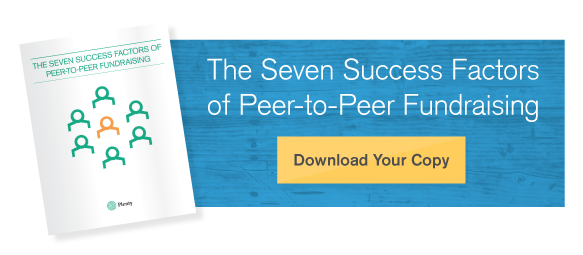How To Acquire, Recruit, & Retain Fundraisers In A Peer-to-Peer World
Spring is approaching (though you wouldn’t know it in Chicago!), which means that event season is too. Soon, you’ll pull out your running shoes from the depths of the closet, step out the front door into the fresh air, and face the harsh reality that your New Year’s fitness resolutions quickly took a backseat to Netflix. And just like you, your participants will also need to be coaxed out of hibernation to participate, donate, and fundraise for your event.
For that reason, we couldn’t be more pleased with the timing of this year’s P2P Professional Forum (P2PPF) conference and our session on acquisition, recruitment, and retention. These three drivers of program performance, revenue, and mission impact are a priority for any organization with a fundraising program. And although no silver bullet has been found yet that makes achieving registration goals as easy as pushing a button, improving these metrics doesn’t have to be an arduous and overwhelming process.
When it comes to your event, potential and existing participants will want to hear compelling stories about your mission impact, be motivated by the successes of like-minded peers, and feel excited to take action in an appealing activity with the people they care about most – their peer networks.
Here is a breakdown of how you can foster these peer-to-peer connections throughout your organization’s acquisition, recruitment, and retention efforts.
Acquisition
Reaching acquisition and recruitment goals shouldn’t be just about getting new bodies to the event, but attracting new people who will share, donate, fundraise, show up, and engage. You get the most support from those most closely connected with your cause. Therefore, it makes sense to focus your acquisition efforts on those who care most about your mission. This begs a number of questions: How can we find others like them? Where might they be found? Who can help us reach them?
These tips will point you in the right direction:
- Contact lapsed donors and stale engagers of your other programs. It easier to re-engage past donors than to attract completely new ones. By reaching out again you can determine if they’re ready to engage again, or maybe in a different way – you never know unless you ask.
- Talk to employers of your strongest fundraisers – especially if there are several people who work for the same employer. The company may be willing to form a corporate team knowing the cause is important to a group within their staff.
- Implement Facebook Ads that target current P2P fundraiser look-a-likes. This is a powerful service Facebook offers that allows you to get your program in front of people that demographically resemble your current constituents.
- Encourage engagement via social media channels. Remember, peer-to-peer fundraising is not about whom you know, but rather whom your existing constituents know and have access to. Encourage your constituent base to talk about your organization or event on social media, in a tone that appeals to their unique style. A great example of this is Giving Tuesday’s #unselfie campaign.
If you want people to register for your event, not just any ask will do. Craft a compelling one that resonates with the audience and considers the following participation dynamics at play during their decision making process: Do I care about the cause? Would I assimilate into the community? Do I have interest in doing the activity? An ask that incorporates these intricacies will call your constituents (if properly vetted for connectedness and sympathy to your cause) to action.
By properly targeting your most passionate people with community connections, you will improve the effectiveness of your recruitment efforts and register the right people.
Here are ways you may find those passionate, connected people:
- Search your database for those with a direct connection to your cause. You know they care and want to help, and their passion will be contagious.
- Encourage high performing individual participants to form teams. Don’t let these role models get away – encourage team formation so they can share the event experience with others.
- Enlist your board to recruit new, high-potential participants, including themselves. They have a vested interest in the success of your event and access to unique, influential networks.
- Encourage existing well-performing teams to grow. Successful teams have already demonstrated interest and passion, and have established leverage within the community.
- Don’t forget about survivors. Survivor participation is an opportunity to leave a legacy and to have an impact on those that will come after them. Survivors have powerful stories that attract and motivate people to take action year after year.
The one thing we like more than a fundraising participant is a fundraising repeater! Every data set we’ve analyzed has reflected the same truth: repeaters fundraise and engage more than new participants do, and for that, they deserve to be acknowledged and recognized. Most importantly, they deserve to be treated like a friend, and not just another bib number. So, what retains a repeater?
Here are some ideas:
- Personalize the experience. Segment repeaters from your participant list and (at the very least) open your registration acknowledgment email with, “Welcome back!” Better yet, take the language a step further and recognize specific milestones like fundraising activity in your emails.
- Show that participation matters. Participants want to know their investment counts for something. Share heart-felt stories of mission impact to demonstrate that their fundraising success made a tangible difference.
- Help them fundraise. Acknowledge fundraising milestones in your communications, and include tips and tools for how to take their success to the next level. Let them know they aren’t in it alone.
- Introduce passionate peers. Share stories of other successful participants, like the team captain who raised $2,000 with her family and friends by holding a neighborhood movie-in-the-park night to remember her father who loved old westerns with Cary Grant.
- Steward year-round. No one likes to be only remembered at Christmas with a card you signed with a name stamp. Reach out throughout the year with invites to donor appreciation events or public webinars; ask constituents to share informative links or electronically sign a petition; and most importantly, provide updates on how the event’s success has fueled important mission work. Want to earn a gold star? Periodically call top performers just to say hi!
The silver bullet of fundraising is mission impact. Share carefully selected, mission-centric stories with your constituents, acknowledge and foster engagement with your mission, encourage conversation, and your audience will grow. As people, we are hard-wired for peer-to-peer – it’s why we spend 6+ hours a month on Facebook, seek out meet-ups, and research vacation destination reviews before booking that perfect getaway. We want to hear about the lives of our peers – how they experience the world around them, what they need, what they’re doing, why they’re doing it, and how we can join them.
After all, it is a peer-to-peer world.
For more information on the expansive nature of peer-to-peer, stay tuned for Plenty’s full report on 2014 fundraising trends and takeaways, which will go live from the main stage at the P2PPF conference next week, February 24th.
Learn more about growing your peer-to-peer fundraising program in 2015 when you download our free Seven Success Factors e-book, which highlights the seven components critical to achieving fundraising success.
Share this
You May Also Like
These Related Stories

What's Hiding In Your Peer-to-Peer Data?

A Introduction To Peer-to-Peer Fundraising




No Comments Yet
Let us know what you think